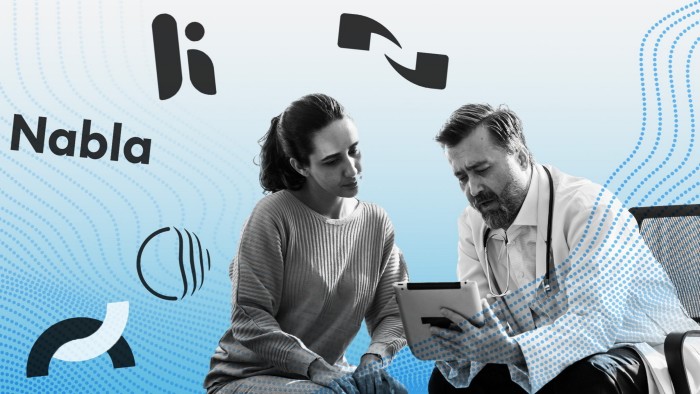Investments in artificial intelligence-powered medical note-taking apps doubled in 2024, as tech giants including Microsoft and Amazon and start-ups fight to grab a share of the AI healthcare market, valued at $26 billion.
AI startups focused on creating digital “scribes” for healthcare professionals raised $800 million in 2024, up from $390 million in 2023, according to PitchBook data.
Startups like Nabla, Heidi, Corti and Tortus raised funds last year, with donors including Khosla Ventures, Entrepreneur First and French tech billionaire Xavier Niel.
Funding increase comes as groups rush to launch AI-based products which aim to enable doctors to take medical notes faster and improve interactions with patients, as healthcare becomes a key growth area in the AI boom.
Microsoft, owner of AI speech recognition company Nuance, along with Amazon and Oracle have launched AI co-pilots for doctors that use large language models and speech recognition to automatically generate transcripts of patient visits, implement highlight medically relevant details and create clinical summaries.

“I don’t think I’ve ever seen anything more transformative than this in 15 years in healthcare,” said Harpreet Sood, a primary care doctor in south London who is testing the startup’s app. -up French Nabla for 15 months. .
Sood, a former technology and innovation adviser to the chief executive of NHS England, said that in a full-day clinic with around 40 patients, traditional note-taking can take up at least two hours of typing time.
“This has been remarkable, easily saving 3-4 minutes of each (10 minute) consultation and really helping to capture the consultation and its topic,” he added.
Nabla’s note-taking app uses Whisper, a transcription tool from ChatGPT creator OpenAI, and has been used to transcribe around 7 million medical visits since October last year.
Hospitals and GPs across the UK’s National Health Service are trialling AI note-taking as a way to save time and improve doctor-patient interactions. According to a Mayo Clinic study, doctors spend an average of a third of their workday on administrative tasks, like paperwork.
Meanwhile, Microsoft said Nuance’s DAX Copilot tool, launched just over a year ago, now documents more than 1.3 million doctor-patient encounters each month across more than 500 healthcare groups in the United States.
Nuance, which Microsoft bought for nearly $20 billion in 2022, said the AI tool reduces the time doctors spend on clinical documentation by 50%.

At Stanford Medical School, more than 50 primary care physicians tested Nuance’s AI-powered note-taking system in 2024, and two-thirds of users said it saved them time.
Doctors closely examined the accuracy of the AI-generated notes, and the vast majority, about 90%, had to be manually edited to correct inaccuracies, a person familiar with the trial said.
Despite this, the results prompted Stanford to plan the deployment of DAX Copilot to all of its suppliers.
Sood said that while he checks every report generated by Nabla’s app, the cognitive load of writing and listening simultaneously during a consultation is hugely “minimized, if not completely eliminated” by the tool.
“We can focus more on the patient, listen to them, be more present, understand their body language. I enjoy my consultations more now,” he added.
However, the increase in medical note-taking has sparked criticism from researchers about the dangers of AI-generated fabrications, known as “hallucinations”, which could be particularly harmful in a medical context , as well as on the issue of patient data confidentiality.
Researchers from Cornell University and the University of Virginia analysis thousands of transcript snippets generated by Whisper from 2023 and found that about 1% of audio transcripts contained “entire hallucinated phrases or sentences that did not exist in any form in the underlying audio.”
According to the study, approximately 40% of hallucinations included harmful content, such as perpetuating violence or creating inaccurate associations.
“I wouldn’t just rely on the tool, I would read each note to check and go back to the transcription,” Sood said. “There’s work to be done there, but. . . for me personally it was a big change.

